In writing up an article on Brangwyn’s interior design for 13 Lansdowne Road, London, I discovered a little more about the house and it’s owner. Below is the history of the house and then under is the article from The Studio Magazine, in 1900.
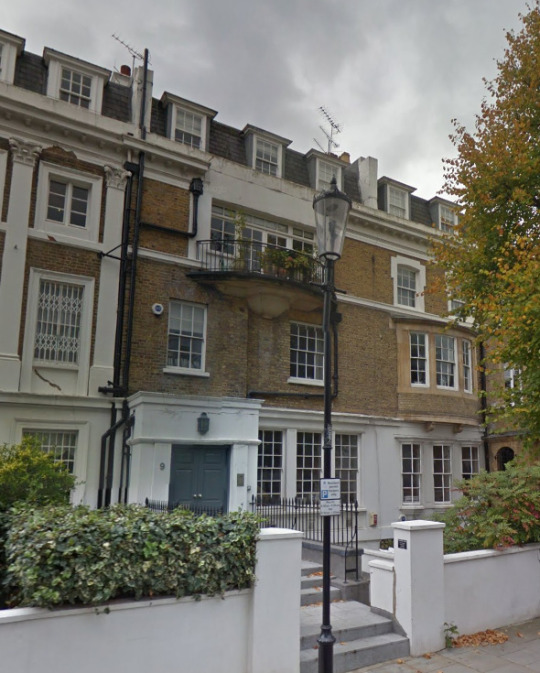
Nos. 11 and 13 were a pair of no doubt half stucco villas very similar to the others on this block. However, both houses were acquired in the late 19th century by Sir Edmund Davis, the millionaire and patron of the arts who built Lansdowne House. In around 1900, shortly after his marriage, he united the two houses, with the help of William Flockhart, the architect of Lansdowne House. Around the same time their facades were remodelled in Gothic style. Several rooms in Davis’s double villa at Nos. 11 and 13 were decorated and furnished by Frank Brangwyn around 1900. Charles Conder also painted a number of panels in water-colour on silk. Much of Brangwyn’s work is said still to remain. †

Frank Brangwyn designed door handle.
A bedroom decorated by Frank Brangwyn. From, The Studio: Volume 19. February-May 1900
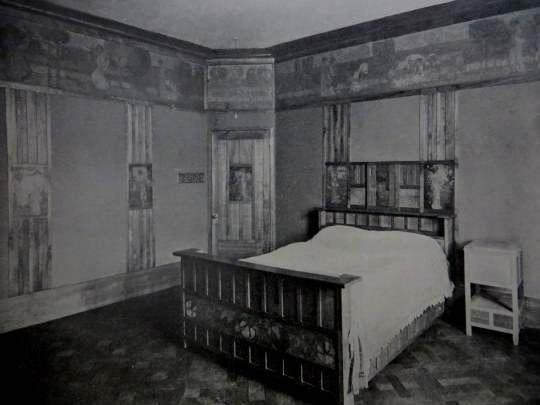
Frank Brangwyn designed bedroom with freezes.
Although the collecting of pictures has ceased, of late years to be a general fashion, it certainly cannot be said that people with artistic tastes have lost
their desire for surroundings that are attractive and aesthetically satisfying. The lessened demand for pictorial productions does not mean that art in the broad sense has become uninteresting to the majority of thinking men, but simply that a conviction has grown up that other, and perhaps better, ways of adorning modern houses can be found than the old device of covering the walls with a heterogeneous collection of canvases of different dates and without any community of style.
What has happened is transference of patronage from the picture painter, to whom formerly it was given almost exclusively, to the decorator and design, whose right to place in the front rank of his profession is gaining daily a wider and more sincere recognition. This is to some extent a reversion to the creed of the Middle Ages when there was not the hard and fast line that has been drawn in modern times between workers in various branches of art.
The medieval artist took a very comprehensive view of his responsibilities, and spared no pains to equip himself so completely that he would be equal to whatever demands might be made upon him. He was by turns painter, architect, metal-worker, and sculptor, a craftsman full of adaptability, a practitioner learner in all the details of artistic production. But through all his practice ran the one dominating idea, that his mission was to decorate, to make something that would fulfil a specific purpose of adornment and
permanently beautify some chosen place. It is this idea that is being revived today. A steadily increasing section of the public is asking for something like consistency in the applications of art to modern life; and the wish to make practical aestheticism logical and complete is becoming a powerful factor in deciding the direction in which artists can hope to achieve success.
The specialist, the man who narrows himself down to fit a certain groove and refuses to see what lies beyond it, is losing his following because he does not realise that taste has changed and that his work does not satisfy art lovers whose ideas have progressed while his lave been standing still. His place is being taken by the more observant craftsmen who can read the signs of the times, and are prepared to adapt themselves
to what is plainly required.

Frank Brangwyn designed Light switches.
That the change is really in the best interests of art, though it may affect seriously a considerable class of artists, is quite undeniable. Decorating is the foundation of all that is best in artistic production, and its principles govern every detail of sound aestheticism. The great pictorial masterpieces which have set the standard of picture painting throughout many ages owe their authority to the fact that they were created by men who considered design as an absolute essential for the building up of great compositions, and depended on nature for the component parts of a pre-conceived pattern rather than for suggestions as to the subject that should be chosen for illustration.
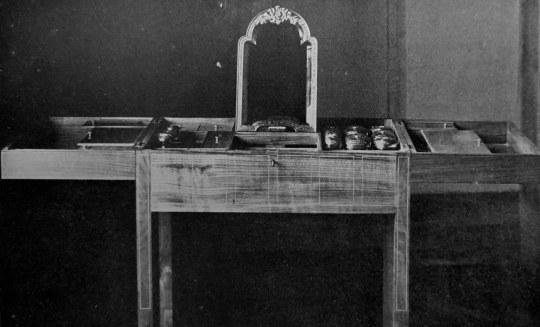
Frank Brangwyn designed Dressing table (open)
The modern painter has accustomed himself to worship realism, and to condemn as conventional everything which does not reproduce exactly the facts that nature presents. He has bowed down before the imitative accuracy and through of the old masters, but he has missed the value of the decorative convention which in their work brought nature and art into harmony; and he has lost in consequence the guidance by which his effort can most surely be saved from straying into vague irresponsibility. Therefore, a change in the public taste, and the growth of a demand which will oblige the workers to study more closely the laws of decoration, cannot fail to improve the character of their art, and give it eventually a higher value and significance.
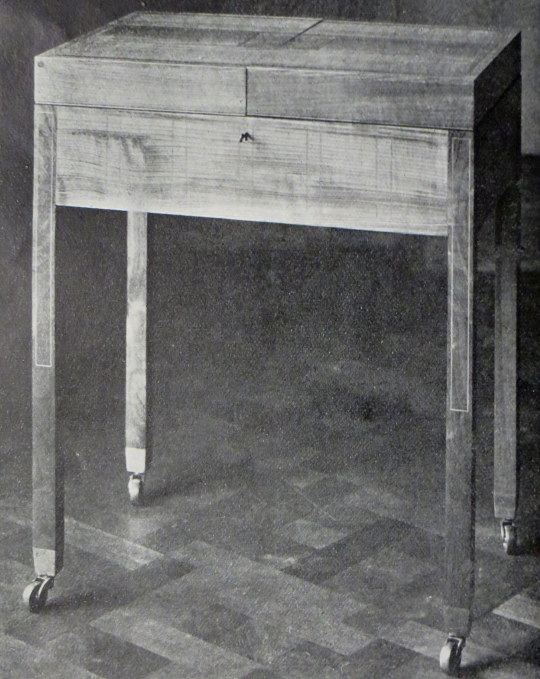
Frank Brangwyn designed Dressing table (closed)
At present the number of men who have set themselves to satisfy the new condition is distinctly limited. In the great array of working artists some are
too wedded to their habitual methods, or too well satisfied with the successes they have made in the past, to care to launch out in the fresh directions; others are too blind to what is doing on about them to see that they cannot hope to raise a fresh crop on the ground that their predecessors have already exhausted. Only here and there is there to be noted evidence of more correct appreciation, signs that the position of affairs is read aright, and that its necessities are properly and practically understood; but though these evidences are scattered they are plain enough to put beyond question the change into professional practice that is inevitably coming.
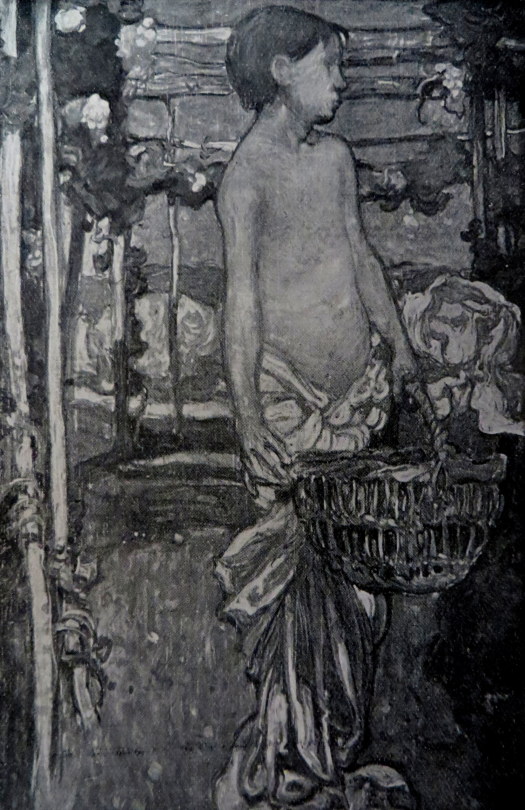
Frank Brangwyn designed freeze (detail)
No one, perhaps, deserves greater credit than Mr F. Brangwyn for keen and prompt appreciation of the duty that lies upon the artists of to-day. He is an instinctive decorator, with a true knowledge of all the refinements of design, the subtleties of colour arrangement, and the elegance of line, which must be closely studied by the craftsman who wishes to do work made a reputation that stands as high abroad as at home; and as a designer of strained glass, textiles, and woven fabrics, metal work, and other ornamental accessories, he has few rivals. One of the most interesting of his developments has been as a decorator of houses. Here he has been able to combine his many-sided knowledge of the applied arts with all that is most original in his pictorial feeling, and to unite harmoniously exquisite freshness of fancy with constructive ingenuity of a delightful kind. As a
consequence he has gained artistic effects that are in some respects unique, because they are the outcome of his peculiar individuality, and reflect his own personal beliefs about the part that aesthetics should play in modern life.
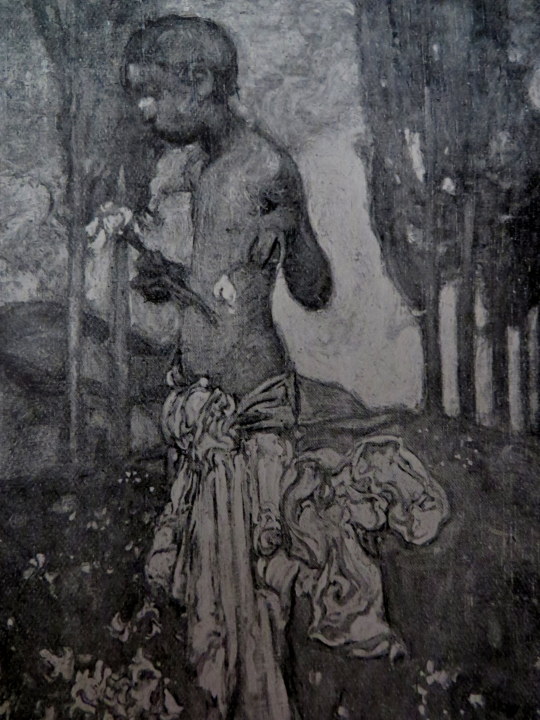
Frank Brangwyn designed freeze (detail)
His most recent effort in domestic decoration has just been carried out for Mr. and Mrs. Davis at 13 Lansdowne Road, London, where, with other well-known artists, he has helped to give an ordinary London house an extremely attractive aspect. His share in the work is the principal bedroom, in which every detail of the arrangement, every piece of furniture, and every little accessory by which the decorative scheme is perfected, can be claimed as an expression of his artistic creed. The room illustrates in every part the feeling that dominates the whole of his practice in painting and design; and in its subdued, yet varied, harmony of colour, its severe dignity of line, and its atmosphere of absolute fitness for its specified purpose, it bares the stamp of an artist who does nothing without exact calculation, and leaves no detail to chance.
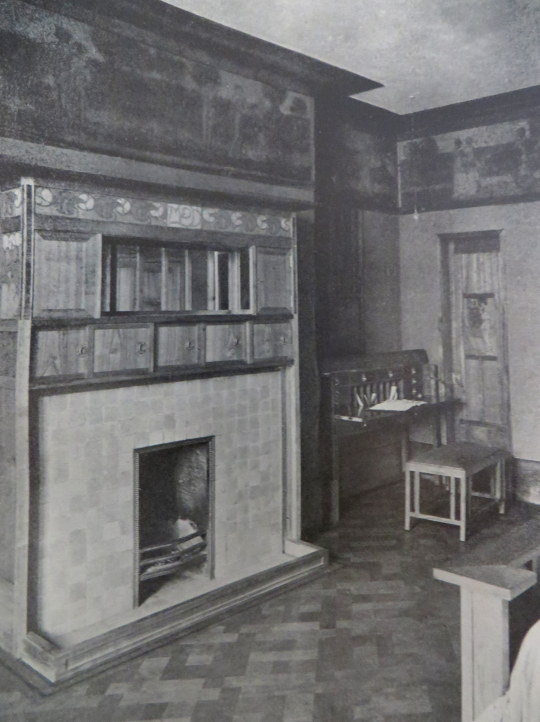
Frank Brangwyn designed Fireplace.
There is an especial charm in the manner in which the colour is managed. To gain response without dullness and delicacy, without monotony, is the first essential in the decoration of a bedroom, so Mr Brangwyn chose a
scheme of quiet tints that would combine into a restful effect of warm greys. Into the frieze of figures and landscape, and into the panels on the upright strips of woodwork which divide the walls into compartments, he has introduced tones of warm blue and fresh colour, and the cornice of the ceiling is in a deeper tone of the same blue.
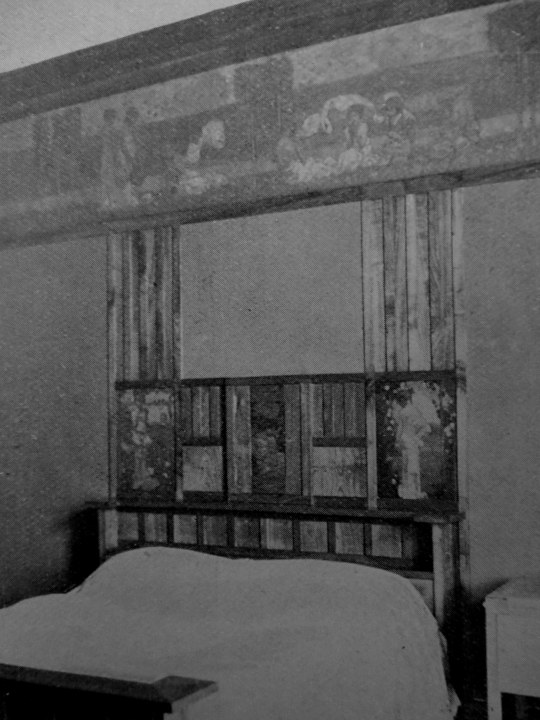
Frank Brangwyn designed bed-head.
The doors, skirting, over-mantel, and all the articles of furniture are made of unpolished cherry-wood, the warm tint of which contrasts effectively, and yet not strongly, with the brown paper that is the covering of the walls; and the floor is oak parquet not too highly polished. A slightly more definite note of colour, a rosier pink than the flesh colour in the frieze, accentuates the panel that, above the head of the bed, hides a telephone by which the occupant of the room can communicate with other parts of the house. The door-handles, the switch-board for the electric light, and the little ring handles which are on the small cupboard doors of the over-mantel, are in oxidised silver, quaintly modelled and full of detail. Those lines of the furniture, like those of the room itself, are dignified and without any restlessness, severe perhaps in their simplicity, but neither heavy nor trivial.
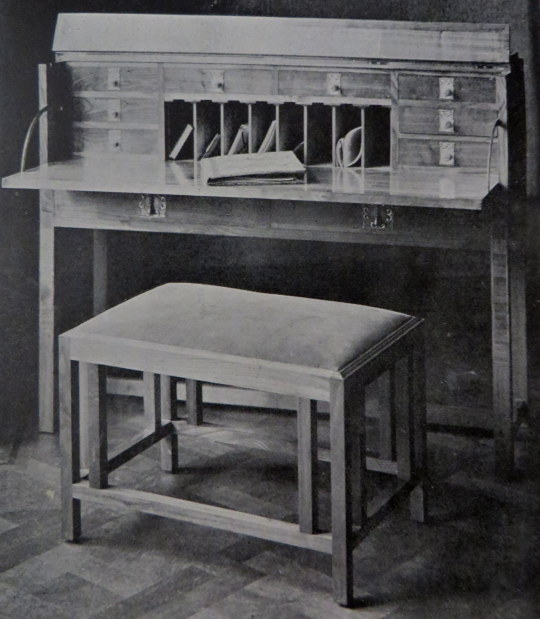
Frank Brangwyn designed Desk and seat
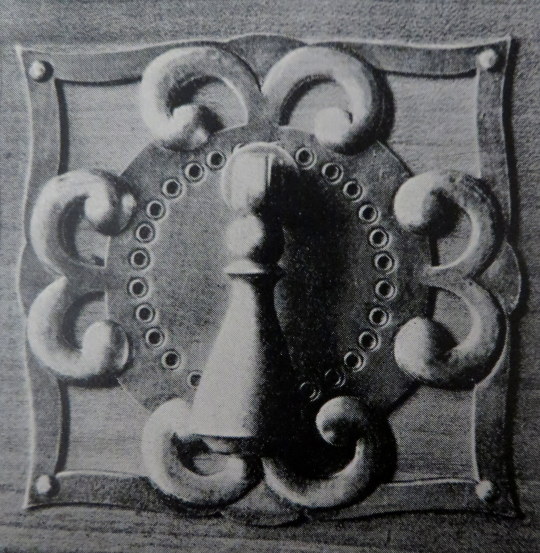
Frank Brangwyn designed A handle from the desk
They have in form the same character that there is in the colour – a subtlety that prevents the minute care that has been exercised in perfecting them from becoming too obvious. Indeed, careful, studied, and exact, as
the whole work is, it has a curiosity happy air of spontaneity, and makes no display of labour or eccentric ingenuity. It I a decoration without a flaw, and it shows most hopefully what vitality there is now in the school of design that is making its influence felt amongst us.
† http://www.ladbrokeassociation.info/LansdowneRoad.htm#Nos1to27